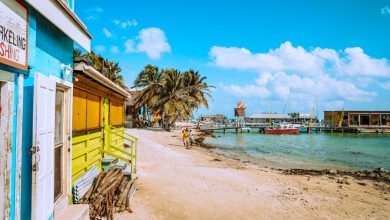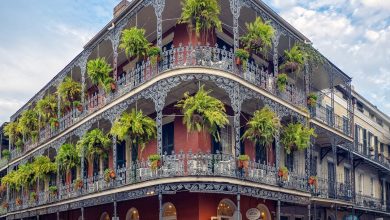Yellowstone National Park Travel Guide: Unveiling Nature’s Marvels

Embark on a journey through America’s first national park with this comprehensive Yellowstone National Park Travel Guide. As you plan to unveil the marvels of nature’s own museum, understanding the park’s vastness and diversity is key. Whether you’re mesmerized by geothermal wonders, intrigued by wildlife, or enchanted by the call of the wild trails, Yellowstone offers an adventure for every traveler. Let’s navigate the terrains, uncover the best times for exploration, and offer tips that promise to enhance your experience in the great outdoors. Join us as we delve into the heart of Yellowstone’s breathtaking allure.
Exploring the Natural Wonders of Yellowstone
Yellowstone National Park, the crown jewel of the American wilderness, offers an astonishing array of natural wonders that draw visitors from around the globe. As part of your Yellowstone National Park Travel Guide, understanding what makes Yellowstone unique is crucial for an unforgettable visit.
The park spans over 2.2 million acres, cradling a variety of eco-zones from lush forests and sprawling meadows to thunderous waterfalls and stark volcanic landscapes. Here are some of the incredible natural features you can explore:
- Geothermal Marvels: Yellowstone sits atop a volcanic hotspot, which powers its famous geysers and hot springs, including the iconic Old Faithful and the mesmerizing Grand Prismatic Spring.
- Grand Canyons and Waterfalls: The Grand Canyon of the Yellowstone is a breathtaking sight, with views of the Lower Falls plunging down into the Yellowstone River.
- Diverse Wildlife: Home to the famous Yellowstone wolf packs, elusive lynx, and majestic herds of bison and elk, the park is a prime spot for wildlife enthusiasts.
- Rugged Peaks and Pristine Lakes: With the rugged backdrop of the Absaroka and Gallatin mountain ranges, Yellowstone features tranquil lakes like Yellowstone Lake, one of the largest high-elevation lakes in North America.
Visiting Yellowstone is like stepping into another world, where Mother Nature’s artistry is on full display. Every corner of this vast park offers a different adventure, a different spectacle to admire. To truly embrace the splendors of Yellowstone, take your time to wander, observe, and soak in the wonders of this unparalleled natural sanctuary.
For the best experience, plan your visit with this Yellowstone National Park Travel Guide in hand, ensuring you don’t miss any of the park’s extraordinary features. Whether you come for the geysers, the wildlife, or the sheer expanse of wilderness, Yellowstone’s natural wonders will leave you in awe.
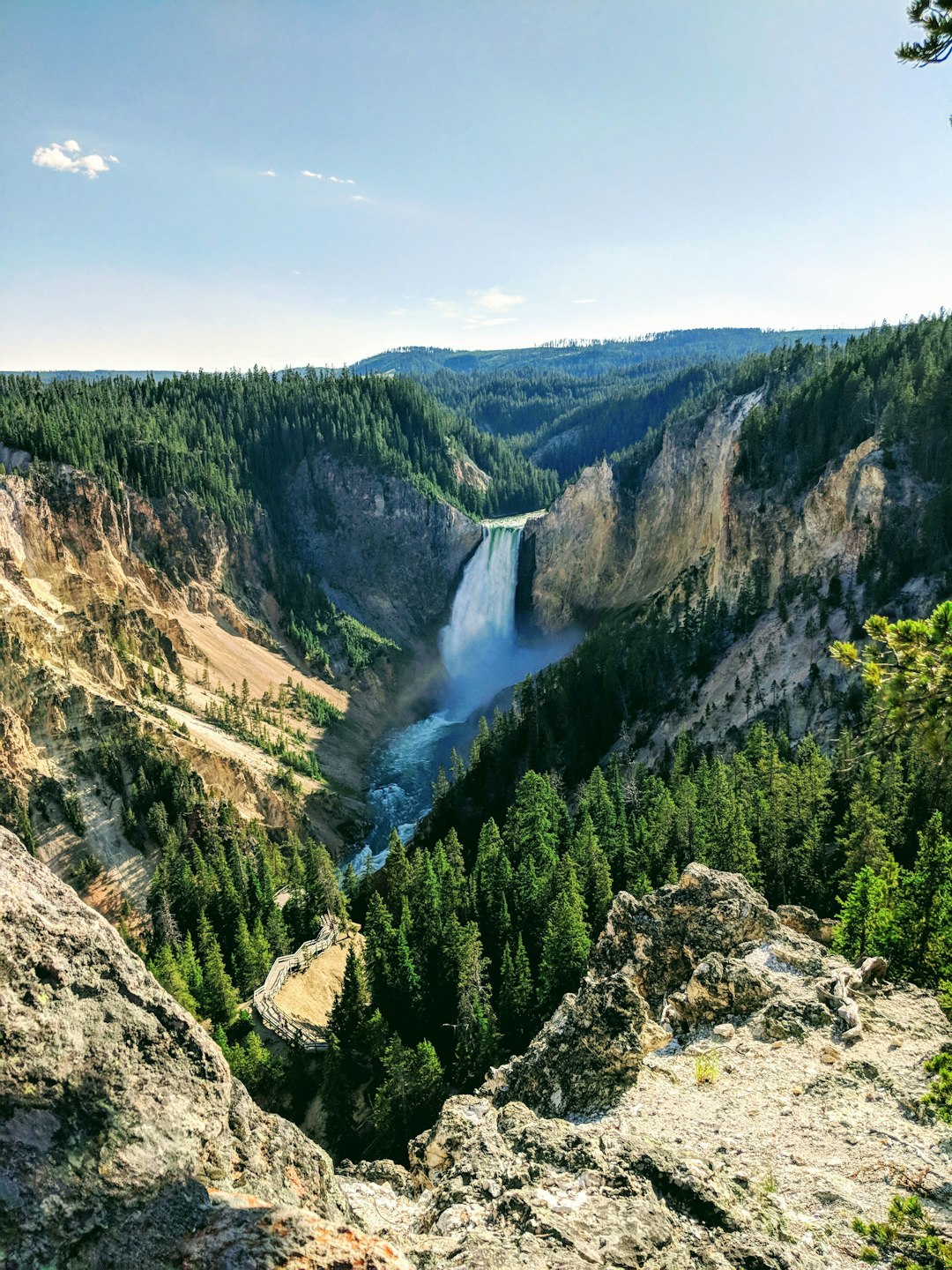
The Best Time to Visit Yellowstone National Park
When planning a trip to this stunning natural sanctuary, timing is everything. Your experience in Yellowstone can vary dramatically depending on the season you choose to visit. To help you decide, let’s take a deeper look at each period:
- Spring (April to early June): A time of rebirth and renewal, spring is when the park begins to shake off the cloak of winter. Though some areas may still be inaccessible due to snow, it’s an excellent time to witness baby animals and experience the park with fewer visitors. The key is to be prepared for unpredictable weather and road closures.
- Summer (late June to August): The peak season for visitors, summer offers warm temperatures and access to all areas of the park. As the most popular time to visit, expect larger crowds and longer wait times at attractions. However, the full range of park services, activities, and tours are available. To beat the crowds, consider an early morning or later afternoon visit.
- Fall (September to November): Offering a golden-hued landscape and fewer tourists, fall is a favorite among photographers and wildlife enthusiasts. The weather is cooler, but it’s a fantastic time for elk sightings during their rutting season. It’s also a more tranquil period for hiking and enjoying the park’s natural sights.
- Winter (December to March): A magical wonderland, winter in Yellowstone is quiet but requires preparation. Limited roads are open, and you’ll need to rely on snowcoaches or snowmobiles for transportation. It’s the ultimate season for those seeking serenity and a chance to engage in winter sports like cross-country skiing.
Here’s a quick comparison to guide your decision:
| Season | Pros | Cons |
|---|---|---|
| Spring | Fewer crowds, baby wildlife | Unpredictable weather, limited access |
| Summer | Full access to the park, warm weather | Crowds, higher prices |
| Fall | Beautiful foliage, wildlife activity | Cooler temperatures, early snow possible |
| Winter | Serene landscapes, winter sports | Difficult access, requires more planning |
In summary, the ideal time for your Yellowstone National Park Travel Guide adventure depends on what you want to see and do. Whether it’s the bustling life of summer or the tranquility of winter, every season has something magical to offer.
Navigating the Park: Transportation Tips and Tricks
When using this Yellowstone National Park Travel Guide to plan your journey through the awe-inspiring landscapes, understanding the best ways to travel around is key. Yellowstone’s vastness can be intimidating, but these tips and tricks can help ensure a smooth and enjoyable experience.
Getting Around by Car:
- Pros:
- Freedom to explore at your own pace
- Access to most major sites
- Cons:
- Traffic during peak season
- Finding parking can be challenging
Shuttle Services:
- Pros:
- Convenient and eco-friendly
- Reduces the hassle of parking
- Cons:
- Limited routes and schedules
- May require advanced booking
Firstly, private vehicles are the most common mode of transportation within Yellowstone. They offer flexibility and the convenience of traveling on your own timetable. However, be prepared for summer traffic and limited parking, especially at popular spots like Old Faithful and the Grand Canyon of the Yellowstone. Utilizing the pullouts and larger parking areas can save time and frustration.
Alternatively, Yellowstone offers shuttle services in certain areas. These are fantastic for reducing your carbon footprint and avoiding parking dilemmas. Just be mindful of the shuttle routes and operating times; they might not cover all the places on your itinerary.
Furthermore, for those aiming to reduce their environmental impact, consider options like biking. Some roads in Yellowstone are bike-friendly, though be aware that the terrain and vehicle traffic can add to the challenge.
To effortlessly navigate Yellowstone, consider these pointers:
- Plan Ahead: Check the park’s website for current road conditions and closures.
- Start Early: Beat the crowds and increase your chances of finding parking by arriving at key sights early in the morning.
- Stay Flexible: Have alternative plans in case certain areas are congested or inaccessible.
Remember, the best approach to exploring Yellowstone is one that balances personal convenience with environmental responsibility. With the right planning, traversing the park can be a smooth part of your memorable visit. Keep these tips in mind for a hassle-free exploration as suggested by this Yellowstone National Park Travel Guide.
Lodging in Yellowstone: From Campgrounds to Hotels
When planning your visit to Yellowstone, finding the right accommodation is crucial for an enjoyable stay. This segment of our Yellowstone National Park Travel Guide will help you navigate the array of lodging options within and near the park.
First and foremost, campgrounds in Yellowstone offer a raw and immersive experience in nature. With campsites available for both tents and RVs, they provide a base for those eager to soak in the wilderness from dawn until dusk. Stay at one of these campsites to truly disconnect and engage with the park’s natural beauty:
- Madison Campground: Ideal for fishing and central to many major attractions.
- Grant Village Campground: Great for lake access and close to stores and restaurants.
- Canyon Campground: Perfect for families and hikers due to its proximity to trails.
For those who seek more comfort, Yellowstone houses a range of hotel options offering various amenities. Some iconic lodges within the park boundaries include:
- Old Faithful Inn: A historic hotel giving guests close views of the park’s most famous geyser.
- Lake Yellowstone Hotel: Elegance alongside tranquility, offering lakefront views and fine dining.
Prices and availability vary greatly through the seasons, so early booking is recommended. For a comparison of affordability versus convenience, consider these points:
| Accommodation Type | Proximity to Attractions | Cost | Amenities |
|---|---|---|---|
| Campgrounds | High | Low | Minimal |
| Park Hotels | Moderate to High | High | Varying |
| Hotels outside Park | Low to Moderate | Moderate | Varying |
In summary, whether you’re looking to rough it under the stars or enjoy the park with some modern comforts, Yellowstone National Park Travel Guide encourages visitors to consider their accommodation preferences well in advance of their trip. Both campgrounds and hotel options have their draws, but it’s the natural splendor of Yellowstone that will be the true highlight of your stay.
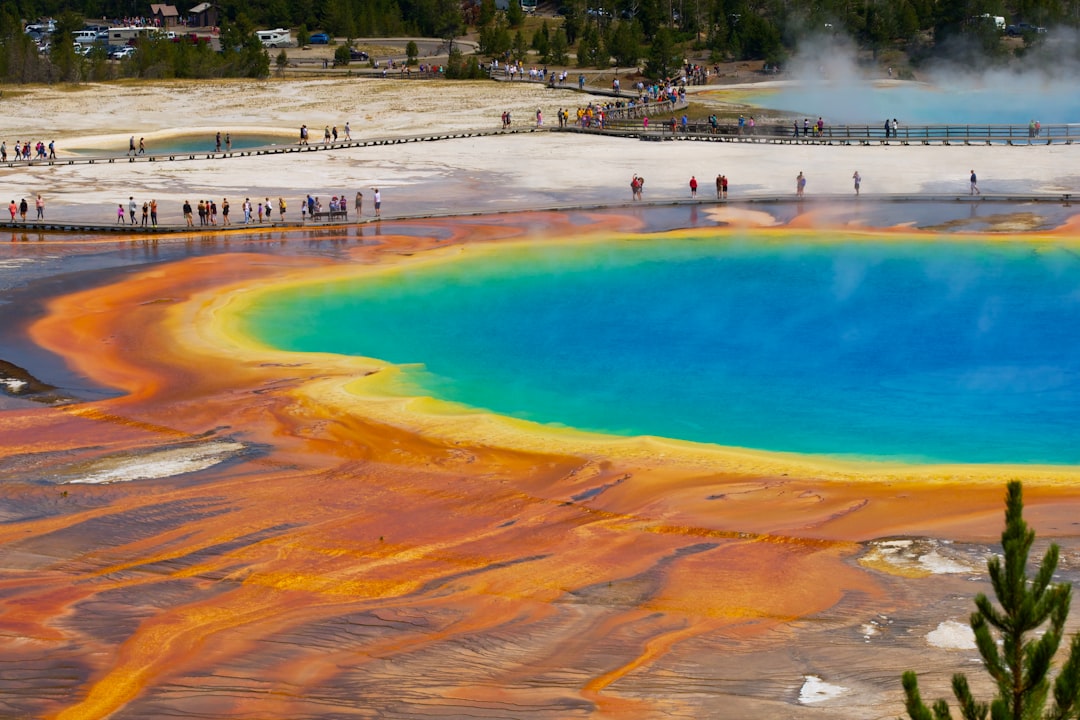
Wildlife Watching in Yellowstone: A Do’s and Don’ts Guide
Yellowstone National Park offers unparalleled opportunities to view wildlife in their natural habitat. Following this Yellowstone National Park Travel Guide to wildlife watching can make for a memorable and responsible experience. Here are some essential do’s and don’ts to keep in mind:
Do:
- Keep a Safe Distance: Always stay at least 100 yards away from predators like wolves and bears, and at least 25 yards away from all other wildlife. Binoculars and telephoto lenses are great for close-up views without the close-up danger.
- Stay on Designated Paths: For your safety and for wildlife protection, keep to marked walkways and roads. Straying off-path can lead to unexpected encounters and disturb habitats.
- Use Bear Spray: When exploring Yellowstone, carry and know how to use bear spray as a precaution against bear encounters.
- Respect Wildlife: Observe quietly and avoid sudden movements. Let animals eat, sleep, and interact with their environment naturally without human interference.
- Be Patient: Wildlife operates on its own schedule. Patience may reward you with spectacular sightings.
Don’t:
- Feed the Animals: Feeding wildlife can endanger both you and the animal. It can lead to unhealthy dependencies and unpredictable behavior.
- Ignore Park Regulations: Yellowstone regulations are enacted to safeguard both visitors and the park’s natural wonders. Not abiding by these can result in fines or removal from the park.
- Forget the Seasonal Behavior: Certain seasons bring about animal migrations, mating, and other behaviors that could affect your wildlife-watching experience. Research before your visit.
- Neglect to Plan Your Visit: Areas like Hayden Valley and Lamar Valley are well-known for wildlife activity. Plan your day around the times animals are most active, typically dawn and dusk.
By respecting Yellowstone’s wildlife and adhering to these guidelines, your visit to this majestic park will be a highlight in your Yellowstone National Park Travel Guide experiences. Remember, observing wildlife responsibly ensures that these magnificent creatures can be enjoyed for generations to come.
Must-See Geysers and Springs: Yellowstone’s Geothermal Highlights
When crafting your Yellowstone National Park Travel Guide, a chapter dedicated to the park’s geothermal wonders is a must. Gifted with half of the world’s geysers, Yellowstone serves as a natural showcase of Earth’s fiery energy. Below are some of the most awe-inspiring geysers and hot springs you should not miss:
- Old Faithful: No trip to Yellowstone is complete without witnessing Old Faithful. Erupting roughly every 90 minutes, its punctuality makes it a convenient and impressive sight. Keep in mind that while eruptions are predictable, it’s wise to check the Visitor’s Center for the day’s forecast.
- Grand Prismatic Spring: Known for its breathtaking colors, the Grand Prismatic is the park’s largest spring. The vivid blues, greens, oranges, and yellows are due to microbial mats around the edges, and the best view is from the overlook trail that displays its full grandeur.
- Mammoth Hot Springs: A complex of hot springs on a hill of travertine, Mammoth is famously known for its terraced landscape. The striking geological formations and warm waters create a surreal environment that’s constantly evolving.
- Steamboat Geyser: Located in the Norris Geyser Basin, Steamboat is the world’s tallest currently-active geyser. It can send boiling water up to 300 feet in the air, though eruptions are much less predictable than Old Faithful.
Your Yellowstone National Park Travel Guide should remind travelers to stick to boardwalks and marked paths to protect both the delicate geothermal features and their own safety. Emphasize the importance of experiencing these natural spectacles respectfully, preserving their beauty for generations to come. Including these geothermal highlights will ensure an immersive and comprehensive guide to the park’s unique offerings.
Hiking Trails in Yellowstone: Routes for Every Level
Discovering Yellowstone National Park’s vast wilderness on foot is an experience like no other. The park offers a plethora of trails that cater to hiking enthusiasts of all skill levels. Below is an overview of some routes that should be included in your Yellowstone National Park Travel Guide to ensure an unforgettable adventure amidst nature’s splendor.
- Beginner Trails:
- Fairy Falls Trail: A relatively flat and picturesque 5-mile round trip that leads you to one of Yellowstone’s tallest waterfalls.
- West Thumb Geyser Basin: Encompassing a boardwalk that showcases geothermal features with minimal elevation gain.
- Intermediate Trails:
- Mystic Falls Loop: At around 3.5 miles, this moderate hike gives stunning views of a waterfall and the option to climb to an overlook of the Upper Geyser Basin.
- Mount Washburn Trail: Depending on the starting point, this can be a 5-7 mile round trip that offers panoramic views from one of the highest points in Yellowstone.
- Advanced Trails:
- The Sky Rim Trail: Demanding, yet rewarding, this 21-mile loop tests endurance and comes with the bonus of sublime views along the park’s boundary.
- Electric Peak: A strenuous 20.6-mile round trip that presents the ultimate challenge for seasoned hikers, featuring spectacular vistas.
Each trail presents its own unique set of wonders, with opportunities to witness the park’s diverse geothermal activity, impressive wildlife, and breathtaking landscapes. When crafting your Yellowstone National Park Travel Guide, it’s important to note that preparation is key for any hiking endeavor. This includes checking trail conditions, weather forecasts, and ensuring you have the necessary gear and provisions for a safe trip.
Yellowstone’s trails are not only pathways to adventure; they are also the arteries through which you can explore the heart of this majestic national park. Whether you are seeking a serene walk or an epic trekking challenge, Yellowstone’s trails are ready to exceed your expectations.
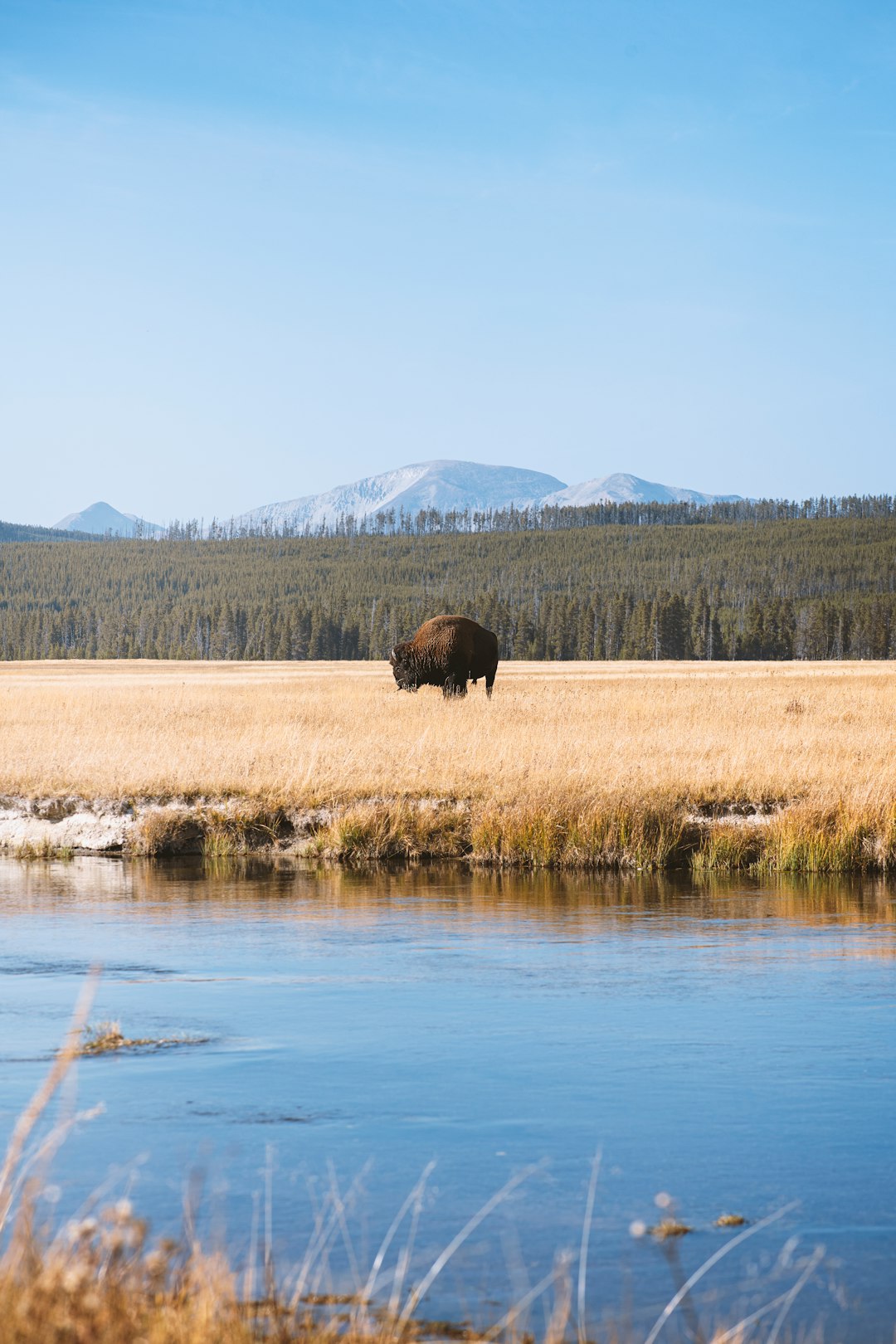
Dining in Yellowstone: Where to Eat in the Park
Exploring the vast landscapes of Yellowstone can work up quite an appetite, and luckily, your Yellowstone National Park Travel Guide wouldn’t be complete without a delve into the culinary offerings within the park boundaries. Whether you’re seeking a quick bite to sustain your adventures or a sit-down meal to relax and reflect on the day’s sights, Yellowstone caters to a variety of tastes and dietary needs.
Here’s where you can fuel up:
- Mammoth Hot Springs Dining Room: Enjoy a casual sit-down experience with a menu that boasts wild game and locally-sourced, sustainable dishes. Perfect for a hearty dinner after a day of sightseeing!
- Old Faithful Inn Dining Room: Offering an elegant dining atmosphere, this historic dining room serves up both regional specialties and classic American fare. Make sure to book ahead, as it’s a visitor favorite!
- Canyon Lodge Eatery: A more laid-back option featuring a cafeteria, a deli, and a snack shop that’s ideal for grabbing a quick lunch or snack between hikes.
- Grant Village Dining Room: Overlooking the West Thumb of Yellowstone Lake, this dining room provides picturesque views and an array of options from buffet breakfasts to appetizing dinners.
- Roosevelt Lodge Dining Room: Known for its Old West BBQ cookouts, Roosevelt Lodge offers a unique dining experience complete with cowboy songs and wagon rides.
Remember, while it might be tempting to enjoy your meal outdoors, always following Yellowstone’s food storage regulations to protect both you and the park’s wildlife. Another tip for a hassle-free dining experience in Yellowstone is reservation; many sit-down restaurants get booked quickly, especially during peak season.
And there you have it — a quick look into the gastronomic opportunities that await in Yellowstone. Whichever dining spot you choose, you’ll find that food tastes particularly delightful in the natural ambiance of Yellowstone National Park.
Yellowstone’s Hidden Gems: Off-the-Beaten-Path Attractions
When venturing through Yellowstone, the allure of its famous landmarks is undeniable—but the park also boasts a myriad of lesser-known wonders waiting to captivate the curious traveler. These off-the-beaten-path attractions are the hidden gems that can transform a typical visit into an extraordinary adventure. In this section of your Yellowstone National Park Travel Guide, we’ll unveil these secret spots, promising a serene experience away from the crowds.
Fairy Falls
Nestled just south of the Grand Prismatic Spring, Fairy Falls offers a tranquil retreat. Although it requires a bit of a hike, the reward is a picturesque waterfall cascading gently over a fairy-tale cliff.
Black Sand Basin
Close to the more frequented Old Faithful lies Black Sand Basin, a geothermal area bursting with colorful hot springs and geysers. The lesser foot traffic makes it a prime spot for quiet contemplation.
Lone Star Geyser
It’s a bit of a trek to reach the Lone Star Geyser, but the path itself is scenic and the eruptions are impressive, erupting approximately every 3 hours.
The Bechler Region
The southwestern corner of Yellowstone, known as the Bechler Region, is often overlooked by tourists but is a haven for hikers. Here, you’ll find stunning waterfalls and the allure of the backcountry.
Shoshone Lake
Accessible via hiking, Shoshone Lake is the park’s second-largest lake, offering peace and solitude for those willing to explore its shores.
By stepping off the well-trodden path, you’ll not only avoid the throngs of tourists but also have the chance to intimately connect with Yellowstone’s natural grandeur. Keep this Yellowstone National Park Travel Guide handy as you explore, and remember: the park’s true essence often lies hidden in these unassuming, quiet corners, each with its own story to tell.
